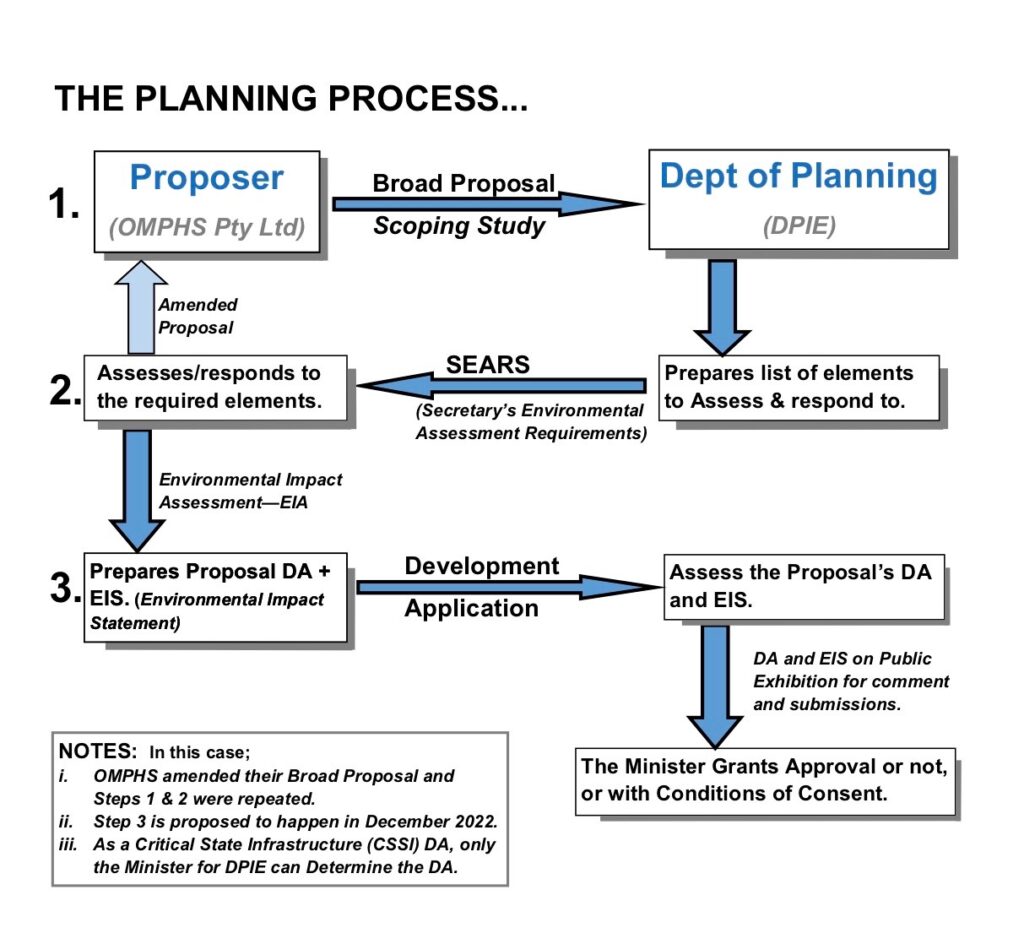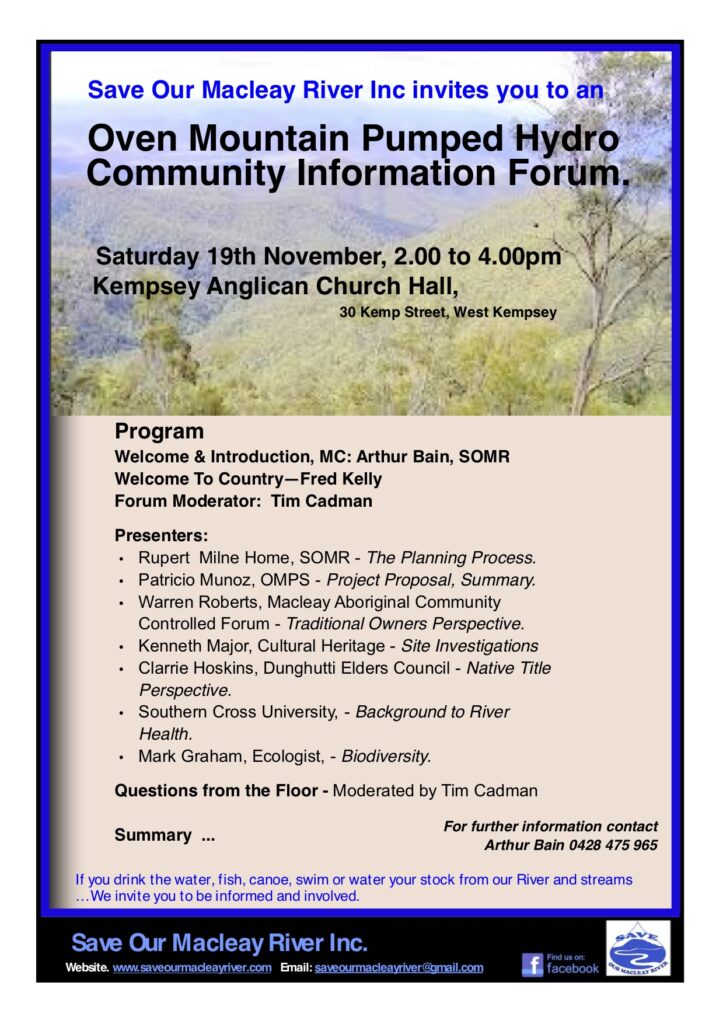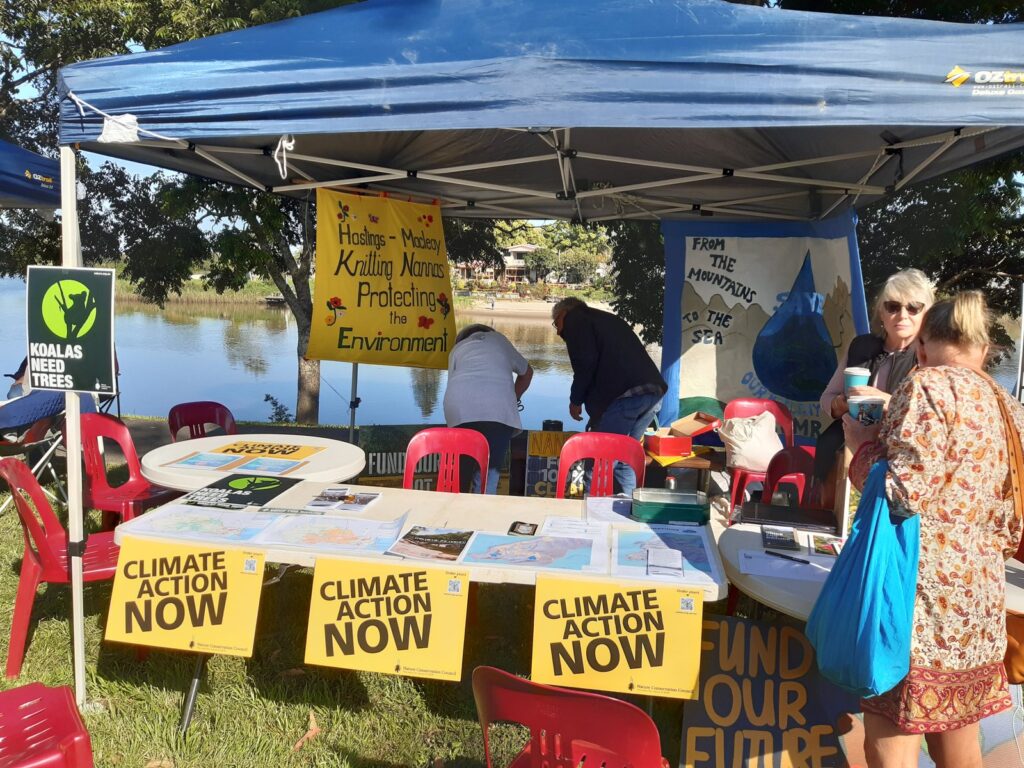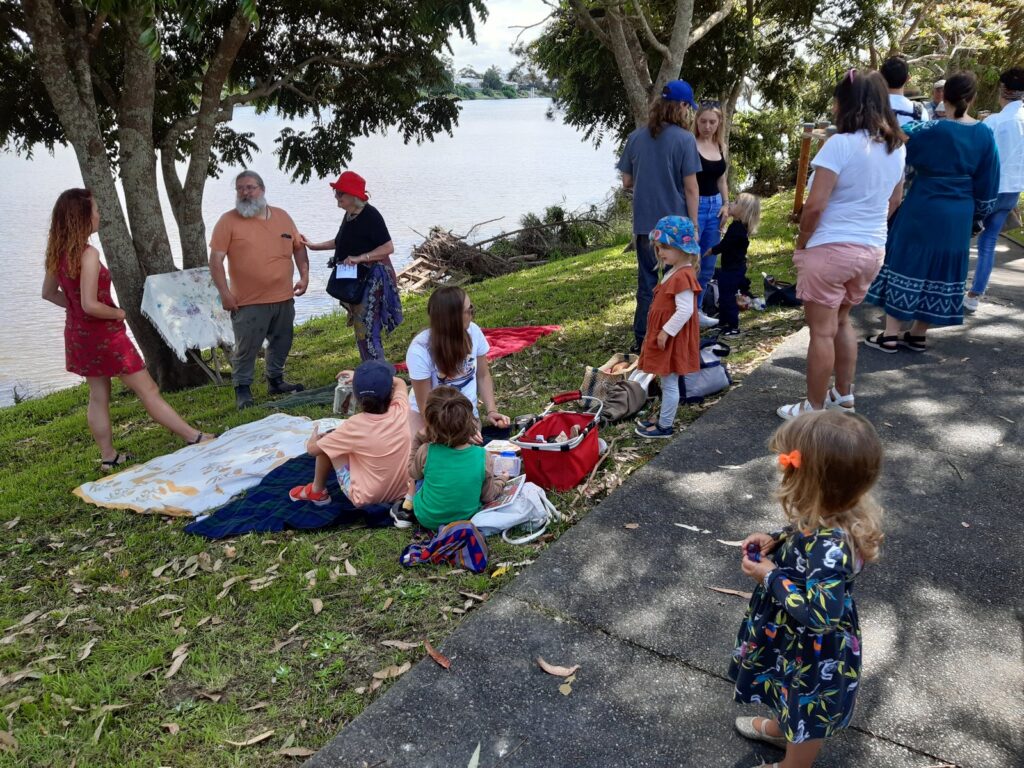The Public Information Forum on Saturday 19 November was attended by 100 Macleay residents and three OMPHS representatives. SOMR organised this event to provide an opportunity for the proponents of the scheme to give a comprehensive presentation of the plans as well as for representatives of the First Nations community, environmentalists and local residents to ask questions and voice their concerns.
After the initial introduction of the program, SOMR founding member Arthur Bain, handed over to the Forum Moderator Dr Tim Cadman, Research Fellow at Griffith University and Mid North Coast resident.
First up, SOMR Secretary Rupert Milne Home explained the planning process.

The Forum was timely, because the planning process for the project is at a significant stage with the Environmental Impact Statement (EIS) and the Development Application (DA) to be finalised and lodged with Department of Planning and Environment (DPIE) soon.
OMPHS representative Patricio Munoz explained that, while they intend to lodge the documents by the end of the year, they do not expect the public exhibition by the DPIE before February 2023. These documents will consist of several hundred pages with the public given the required 28 days to comment and write submissions.
Patricio then gave an overview of the project using some of the maps and illustrations which can be found on their website https://www.ompshydro.com/project/ He emphasized that the Macleay River will not be dammed and that ‘fast tracking’ the project does not mean that there will be short cuts in the planning process.
The OMPHS representatives had to leave after their presentation with very little time to answer questions at the meeting. Therefore, questions were later taken from the floor to be sent to OMPHS. (See below)
The speakers for the Dunghutti Nation, Warren Roberts and Clarrie Hoskins, as well as members of the audience stated repeatedly that the consultation with the First Nation community so far is unsatisfactory as is the research into the impact on culture and country. In the words of Warren Roberts: “The consultative process is no way sufficient for us to come on board”.
Addressing one of SOMR’s main concerns, Arthur Bain presented a recently completed report by Professor Scott Johnson of Southern Cross University. Based on water samples taken in Bellbrook by Arthur on behalf of SOMR over several years, it clearly shows how the presence of antimony and arsenic levels in the river are impacted by rain and fire events. Therefore, any soil and rock disturbance during the construction and operation of the Oven Mountain Pumped Hydro project may have the potential to contaminate the Macleay River. Addressing prevention of this contamination in the planning stage is of utmost importance. (Find the presentation on One Drive https://1drv.ms/u/s!AnFAkxeTrT19qE9h0kgsafMSSVrW?e=Y60ByT )
The final speaker, ecologist Mark Graham has spent most of his life in the North Coast and Mid North Coast. He described the Macleay Valley as central to the Great Eastern Ranges, one of the richest areas of biodiversity in the world with globally significant conservation values. The valley is a vital link in the wildlife corridor extending from Gippsland to Queensland. Mark displayed a huge list of threatened species that rely on this corridor. He is concerned the pumped hydro project will cut into the corridor and weaken its critical role in the protection of biodiversity.
In conclusion, Mark pointed to alternative pumped hydro options in less vulnerable environments. One such project is being explored in abandoned coal mines in the Hunter Valley.
Overall, the forum was a good introduction to the proposed project, however many questions remain.
Here are the questions from the floor after OMPHS representatives had left the Forum. They are listed in the order of asking and will be given to OMPHS.
- What are the provisions for decommissioning and rehabilitation of the site at end of life; and who will pay for it?
- What are the statistics on evaporation during high temperatures, low flow and drought?
- What is needed to upgrade the existing transmission lines and who will pay for that?
- What will be done to manage the contamination of Antimony and Arsenic etc. (naturally) in the geology of the area?
- What are the Alternatives to this Project?
- Why cannot a large battery storage be built in Armidale (near the sub-station)?
- How much Pumped Hydro Storage is planned for the New England Renewable Energy Zone (REZ)? – Any other PHS projects proposed here?
- Will the Proponent commit to a Non-State Significant Development pathway, to allow for greater community engagement? 1.
- Can the Proponent guarantee no adverse impact on the Carrai water table?
- Where are the profits going?
- Why build in such a culturally significant area?
- Please confirm dates (and extent) of Aboriginal Community Consultation?
- Have OMPHS considered purchase of the Oakey River Hydro Scheme project? – If not, why not?
- To DPIE and Proponent: Why make staged pathway? 2
- Why was this site chosen, and was there any personal interest involved?



